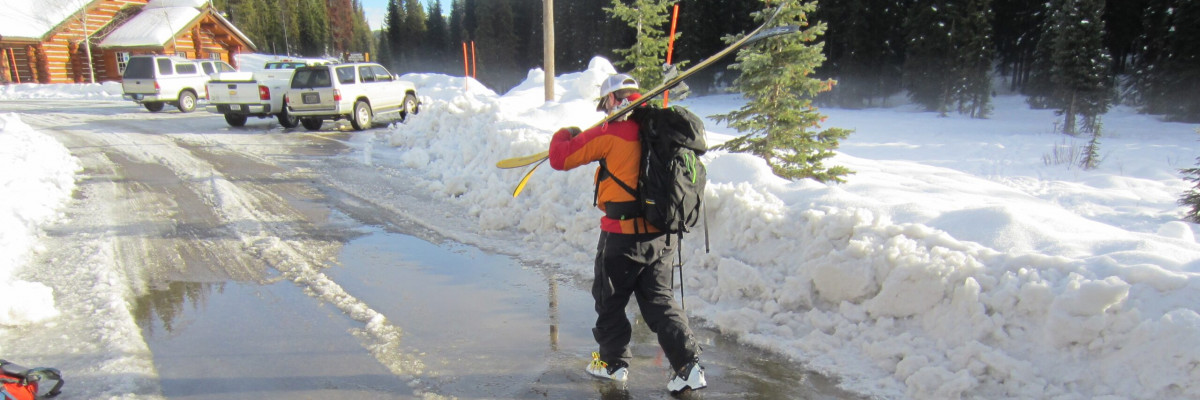There is MODERATE avalanche danger in the west central Montana backcountry above 7000 feet, on slopes steeper than 35degrees. Slab avalanches are possible on steep slopes (>35 deg.) that have a relatively shallow snowpack and have rocky outcrops or cliffs. Any rain on the snow will increase the chances of a slab avalanche and/or the chance of small surface slides. The avalanche danger is LOW in other terrain in the advisory area.
Good Morning, this is Dudley Improta with the west central Montana avalanche advisory for December 12, 2014. This danger rating does not apply to operating ski areas and expires at midnight tonight (Dec. 12).
Weather and Snowpack
This morning mountain winds are blowing out of the south and east at 7 to 16 mph and gusting into the 30 mph range . Mountain temperatures are above freezing up to 8000 feet.
Warm temperatures have strengthened the snowpack. Snotels across the advisory area indicate the snow has settled anywhere from 3 to 6 inches over the last 3 days; a sign of stability.
But, we are still seeing facets at the bottom of the snowpack created in the November cold spell. At higher elevations (>7000 feet) on steep slopes (>35 degrees), particularly where there is rocky terrain, it’s possible this layer could produce a large slab avalanche.
The top layer of wet snow could release on steep slopes as well. These wet sluffs would be small and not nearly as consequential as a slab from the ground level.
Any rain on the snow will increase the chance of either one of these events.
Weather Forecast and Avalanche Outlook
There is a chance of rain in the mountains today, and again the temperatures up to 8000 feet may reach into the 40’s (F). Temperatures are predicted to drop tonight and snow levels may lower. The higher elevations may pick up 1 to 3 inches of snow. Winds may gust out of the south and west up to 30 mph. Although the snow predicted is modest, it may be deposited on a melt-freeze crust and accumulate on lee slopes. I would expect the avalanche danger to rise ever so slightly.
The snow predicted reminds me of Calvin, from Calvin and Hobbes, who said “an inch of snow is like winning 10 cents in the lottery”. At this point, however, we’ll take what we can get.
Public observations can be important to the avalanche advisory and to riders and skiers. If you would like send in snow observations use our public observations form or e-mail us at [email protected] .
It’s early season out there, so be aware of the hazards associated with a low snowpack; i.e rocks, trees, downfall, etc. Ski and ride safe; have a great weekend.
Steve will issue the next advisory on Tuesday, December 16.














